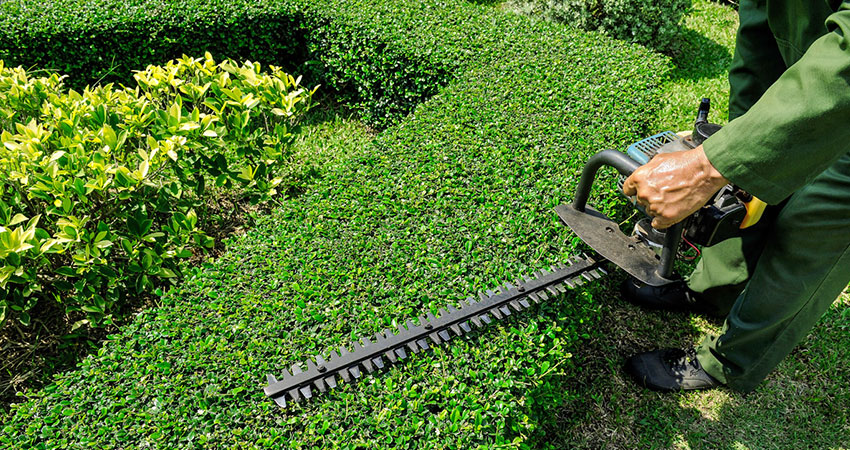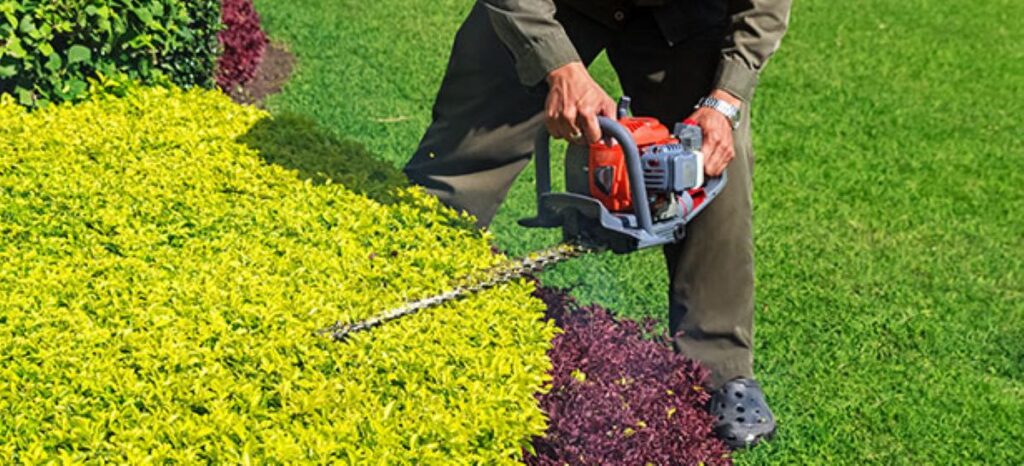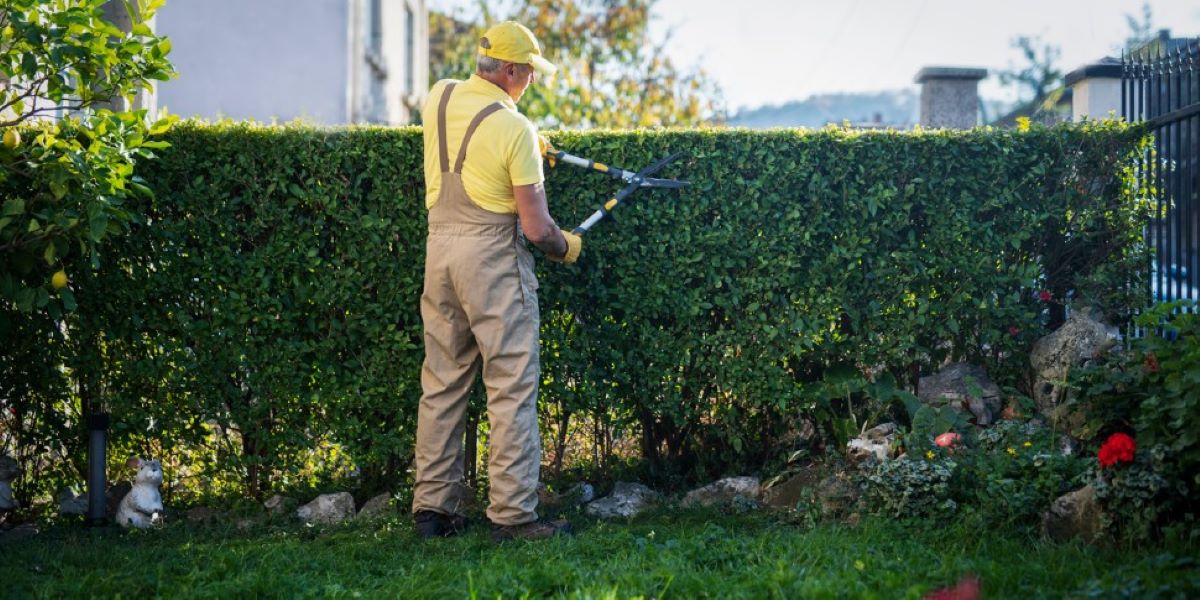Why Is Timing Crucial for Hedge Trimming in Sydney During Summer?
Which Hedge Species Are Common in Sydney and How Do Their Pruning Needs Differ?
Sydney’s temperate climate supports several fast-growing hedge species, each with distinct growth patterns and pruning requirements. Understanding these differences prevents damage and promotes vigorous, healthy growth throughout the year.
Camellia Sasanqua
Camellia Sasanqua thrives as a dense screening hedge with glossy foliage and seasonal blooms. Camellia Sasanqua pruning should occur immediately after spring flowering finishes, typically in late spring, allowing the plant to set buds for the following season without interruption.
Lilly Pilly
Lilly Pilly varieties grow rapidly and respond well to frequent shaping. Lilly Pilly care involves light trimming during warmer months to maintain form, with heavier pruning best reserved for late winter when growth slows naturally.
Murraya
Murraya produces fragrant white flowers and benefits from strategic timing. Murraya trimming times fall in late winter or early spring before new growth emerges, though light summer maintenance keeps the hedge tidy without compromising flowering.
Photinia Red Robin
Photinia Red Robin displays striking red new growth that makes it a popular choice. Photinia Red Robin pruning works best in late winter, encouraging vibrant spring colour while avoiding summer stress that can dull foliage.
Pittosporum
Pittosporum stands out as the most flexible species for trimming. Pittosporum maintenance allows for up to three pruning sessions annually, including early summer, thanks to its robust growth habit and tolerance to regular cutting.

What Are the Best Techniques to Trim Hedges Without Causing Harm?
1. Pinching
Pinching removes only the terminal buds at branch tips, controlling growth without creating stress. This gentle method works best for young hedges or maintaining compact shapes between major trims. Simply grasp the soft new growth between thumb and forefinger and snap it off cleanly.
2. Shearing
Shearing shapes the outer foliage layer using hedge shears or powered trimmers. This hedge trimming technique Sydney gardeners rely on creates formal, uniform appearances by cutting multiple stems simultaneously. The blade should glide smoothly across the hedge surface, removing only 2-3cm of growth to avoid exposing bare wood.
3. Thinning
Thinning selectively removes entire branches back to their origin point or a lateral branch. This method improves airflow through dense hedges and allows light penetration to inner foliage. Cut branches at varying depths rather than creating a flat interior surface, which maintains the hedge’s natural density whilst reducing bulk.
4. Heading
Heading cuts stems just above leaf nodes or buds, stimulating multiple shoots below the cut. This technique encourages bushy, compact growth patterns ideal for filling gaps. Always cut at a 45-degree angle approximately 5mm above an outward-facing bud.
5. Sharp tools
Sharp tools remain non-negotiable for all hedge trimming techniques. Blunt blades crush stems rather than cutting cleanly, creating entry points for disease and causing tissue damage that browns and dies back.
How Can You Protect Your Hedges from Stress and Disease When Trimming in Summer?
Hedge stress reduction begins with choosing the right conditions for trimming. Avoid cutting during extreme heat waves or heavy rain periods, as these conditions weaken plants and create entry points for pathogens. Early morning trimming sessions allow cuts to seal before midday heat intensifies.
Clean, sharp tools form your first line of defence against disease. Blunt blades crush plant tissue rather than cutting cleanly, creating ragged wounds that invite fungal infections and bacterial diseases. Sterilise your equipment between plants using methylated spirits or a bleach solution to prevent cross-contamination.
The connection between safe hedge trimming practices and plant health extends beyond technique. Sharp secateurs and hedge trimmers produce smooth cuts that heal quickly, whilst dull blades tear stems and bark. This damaged tissue becomes a breeding ground for disease organisms that thrive in Sydney’s humid summer conditions.
Personal protective equipment serves dual purposes during summer trimming sessions:
- Gloves protect hands from thorns, sap irritation, and sharp tools
- Safety goggles shield eyes from flying debris and plant material
- Long sleeves prevent scratches and sun exposure
- Sturdy footwear ensures stable footing on uneven ground
Inspect your hedges after trimming for signs of stress such as wilting or browning. These symptoms indicate the need for immediate watering and temporary shade provision during recovery periods.
How Do Regular Feeding and Watering Complement Summer Hedge Trimming?
Feeding hedges in summer in Sydney requires strategic timing to support recovery after cutting. Fertilising within two weeks of trimming provides essential nutrients that fuel new growth, helping hedges develop fresh foliage quickly. A balanced, slow-release fertiliser applied around the root zone delivers nitrogen for leaf development and phosphorus for root strength.
Importance of Watering Hedges After Trimming
Watering hedges after trimming becomes critical during Sydney’s warm months. Freshly cut hedges lose moisture through exposed surfaces and experience heightened stress in temperatures above 30°C. Deep watering immediately after trimming and every 2-3 days during hot spells maintains soil moisture at root level, preventing dehydration that can cause browning or leaf drop.
The Sequence Matters for Optimal Results
The order of these actions is important for achieving the best results:
- Day of trimming: Water deeply before cutting to ensure hydrated tissue
- Within 24 hours: Apply water-soluble fertiliser diluted to half strength
- Week 2-3: Switch to slow-release granular fertiliser around drip line
- Ongoing: Maintain consistent watering schedule based on weather conditions
Tips for Effective Watering
Early morning watering proves most effective, allowing foliage to dry before nightfall and reducing fungal disease risk. Mulching around the base after feeding retains moisture and regulates soil temperature. Species like Lilly Pilly and Murraya respond particularly well to this combined approach, producing dense, vibrant growth within 4-6 weeks of summer trimming.
When Should You Avoid Trimming Due to Environmental or Wildlife Considerations?
Should you pause hedge trimming during bird nesting season in Sydney? Yes, you must avoid trimming hedges between September and February when native birds actively nest and raise their young. Disturbing hedges during this period can destroy nests, abandon eggs, or separate chicks from parents, causing significant harm to local wildlife populations.
Sydney’s dense hedges provide essential habitat for species like honeyeaters, silvereyes, and wrens. Before starting any bird nesting season hedge care Sydney work, inspect your hedges thoroughly for signs of active nests, including:
- Small twigs and grass woven into branches
- Bird droppings beneath potential nesting sites
- Frequent bird activity or protective behaviour near specific areas
- Chirping sounds from within the foliage
What regulations govern the environmental impact hedge trimming creates? New South Wales legislation under the Biodiversity Conservation Act 2016 protects native fauna, making it illegal to harm wildlife or destroy habitat without proper authority. Local councils may enforce additional guidelines during peak breeding seasons.
If you discover an active nest, postpone trimming that section until fledglings have left. Mark the area clearly and trim surrounding sections instead. The environmental impact hedge trimming causes extends beyond immediate wildlife disturbance—removing too much foliage during summer also eliminates crucial shade and shelter that birds rely on during extreme heat events.

When Should You Consider Hiring Professional Hedge Trimming Services in Sydney?
Should you tackle hedge trimming yourself or call in the experts? Professional hedge trimmers in Sydney become essential when hedges exceed manageable heights, require specialised equipment, or when you lack confidence in species-specific pruning requirements. Expert summer hedge care prevents costly mistakes that can take years to correct.
What makes professional services worth the investment? Professionals bring precise knowledge of optimal timing for each hedge species, ensuring cuts promote healthy regrowth rather than stress. They understand which Sydney hedges tolerate summer trimming and which varieties risk severe damage during hot periods. This expertise proves invaluable for maintaining the long-term health of Camellia, Lilly Pilly, and other popular species.
How do professionals handle challenging situations? Large hedges reaching several metres high or those positioned near power lines require proper safety equipment and training. Professional teams use scaffolding, harnesses, and commercial-grade tools to access difficult areas safely during summer conditions when heat exhaustion poses additional risks.
What additional value do experts provide? Beyond cutting, professional services include:
- Pest and disease monitoring during trimming to catch problems early
- Seasonal maintenance schedules tailored to your specific hedge varieties
- Soil health assessments to optimise feeding programmes
- Growth pattern analysis to predict future trimming needs
Professional hedge trimmers in Sydney also carry appropriate insurance, protecting property owners from liability during summer maintenance work.
Conclusion
Healthy summer hedges in Sydney depend on informed choices about timing, technique, and care. Whether you trim your own hedges using species-specific methods or engage professionals for complex jobs, protecting your plants from heat stress and disease must remain the priority. Effective summer hedge maintenance combines light, strategic pruning with proper watering and feeding schedules.
Start planning your approach now—assess your hedge species, check the forecast for cooler periods, and gather sharp tools. For challenging situations or valuable specimens, professional services deliver peace of mind. Your hedges will reward careful summer attention with lush, healthy growth that enhances your property year-round. Take action today to secure thriving hedges through Sydney’s warmest months.
More to Read : Stump Grinding Near Me: How Deep Should a Tree Stump Be Ground?
FAQs About Summer Hedge Trimming in Sydney
Trimming at the right time prevents heat stress, dehydration, and disease. Avoid the hottest periods (January–February) and heavy rain to reduce plant stress and allow rapid recovery.
2. Which months are best for hedge trimming in Sydney?
Autumn (March–May): Ideal for major shaping
Late spring (October–November): Pre-summer tidying
Summer: Only light maintenance during mild mornings
3. How do hedge species affect pruning schedules?
Camellia Sasanqua: Late spring after flowering
Lilly Pilly: Light trimming in summer; heavier cuts in late winter
Murraya: Late winter or early spring
Photinia Red Robin: Late winter for vibrant spring foliage
Pittosporum: Flexible; tolerates up to three trims per year
4. What are the best hedge trimming techniques?
Pinching: Removes tips for gentle shaping
Shearing: Formal outer shape, cutting 2–3cm growth
Thinning: Opens canopy for light and airflow
Heading: Stimulates bushy growth from buds
Use sharp tools to prevent disease and tissue damage
5. How can I protect hedges from stress and disease in summer?
Trim in early mornings below 25°C, use sterilised sharp tools, wear protective gear, and monitor hedges for wilting or browning.
6. How should watering and feeding complement trimming?
Water deeply before trimming
Apply water-soluble fertiliser within 24 hours
Follow with slow-release fertiliser at the drip line
Maintain consistent watering during hot spells
7. When should trimming be avoided due to wildlife?
Avoid trimming between September and February, when native birds nest. Inspect hedges for active nests and postpone work if necessary.
8. Why hire professional hedge trimming services in Sydney?
Professionals ensure safe handling of tall or difficult hedges, know species-specific timing, prevent disease, provide pest monitoring, and carry insurance for liability protection.
9. What’s the key takeaway for summer hedge care?
Focus on light, strategic trimming, species-appropriate timing, sharp tools, and proper post-trim watering and feeding to maintain lush, healthy hedges.
